September 14, 2022
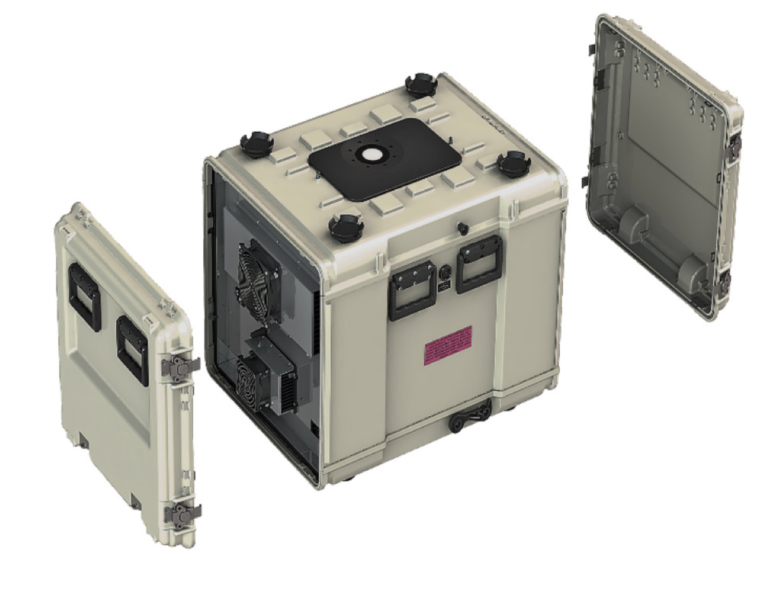
The Technical Situation
Unmanned Autonomous Vehicles (UAV) use a range of sensors from CMOS to SWIR cameras to provide vision for their guidance systems and to measure the surrounding environments for atmospheric and thermal models. Many operators neglect to calibrate or use factory calibrations that are subject to drift and do not account for real time atmospheric effects. In manned or autonomous remote sensing applications, proper radiometric calibration is essential to collect accurate measurements and for proper navigation information. Placing a target of known radiometric output in the sensor’s field of view allows real time corrections to be applied, resulting in robust repeatable measurements.
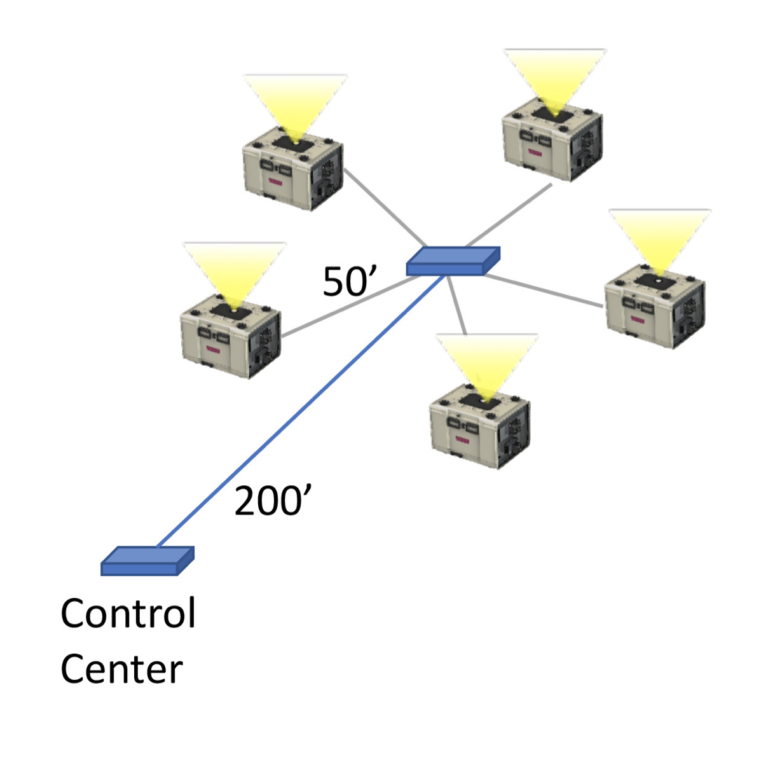
The Challenges, and Labsphere’s Solution
The challenge that presented itself was how to bring the uniform sources into the field, so the equipment could calibrate the cameras over the same long periods in the same environmental conditions.
A national defense company required multiple uniform sources for calibrating and characterizing their optical equipment on UAV’s. The specification of their equipment required that the integrating spheres be ruggedized, portable and weather resistant to withstand harsh desert environments. The systems also needed to be designed so the exit port would face up with a viewing angle up to 75°.
The number of units also allows them to configure a variety of tests for spatial verification such as MTF, PSF, distribution and boresighting.
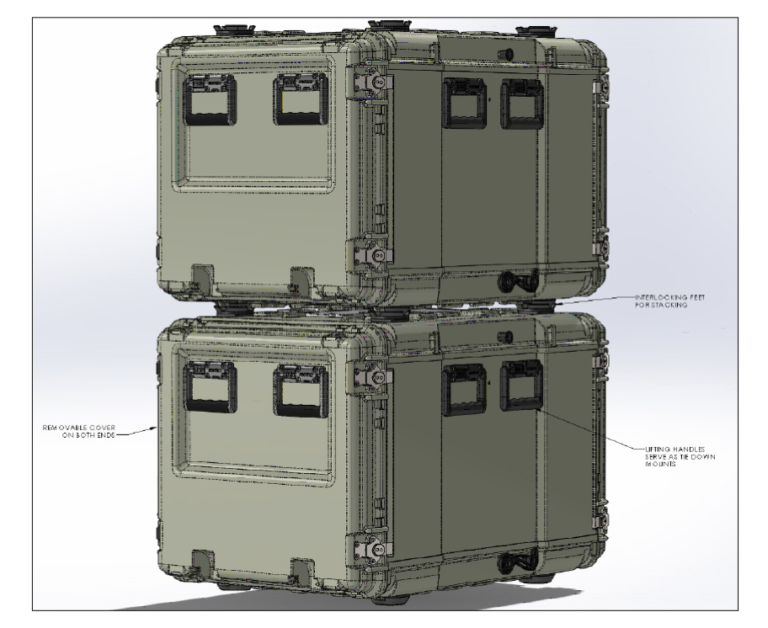
Performance Requirements:
- Wavelengths of interest between 400 – 1000 nm (can be used out to 2500 nm)
- Uniform source system for use in outdoor environment with up-looking exit port
- Systems are to be viewed from above at far field distances and at zenith angles of a minimum of 75°
- Operation temperature from 0° to 50°C
- Custom program to send commands to multiple systems from one workstation
- Multiples of this system is required
- Ethernet communications to be able to run systems at long distances in coordination
- Color & radiometric calibration (RGB)
The Results
Labsphere designed and mounted their HELIOS® style spheres into ruggedized 10U x 24 rack enclosures that would protect the uniform source (and all the control electronics) from the harsh elements. The system is designed with the exit port facing up and a 2 inch diffusing window over the exit port providing up to 200W of uniform illumination with zenith viewing angles up to 75 degrees. The housing is designed to allow multiple systems to be stacked together and also contains two heavy-duty spring-loaded handles on all four sides for ease of mobility using multiple carriers.
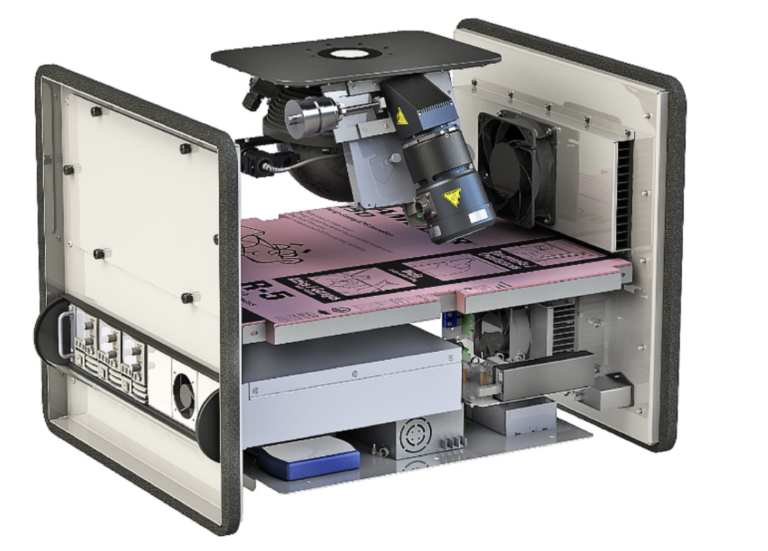
The system enclosure is divided into two halves: the 8 inch integrating sphere with the lamp, VA and detection devices are in the top half, and the supporting electronic components are rack-mounted in the bottom half. A thermally insulated ceiling/floor partition separates the two halves. Both halves contain fan-cooled heatsinks and temperature monitoring points for over-temperature protection that will shut off the system before thermal damage occurs.
A sealed diffuser window is located at the top of the system enclosure right above the sphere’s exit port to protect it from outdoor weather. The sphere illumination includes a fan-cooled HES-150 (150W), external QTH lamp with a manually adjustable variable aperture attenuator (VAM) that enters the sphere through a 5 position, 2 inch filter wheel (HFW-5-2) for color and band filtration of input energy.
The sphere illumination also includes two internal HIS-100 QTH lamps; one rated at 50W and one at 100W. The sphere assembly also contains the SD-S1 silicon detector with three-position filter slide and aperture shutter that is connected to an SMA adapter port with a fiber optic cable.
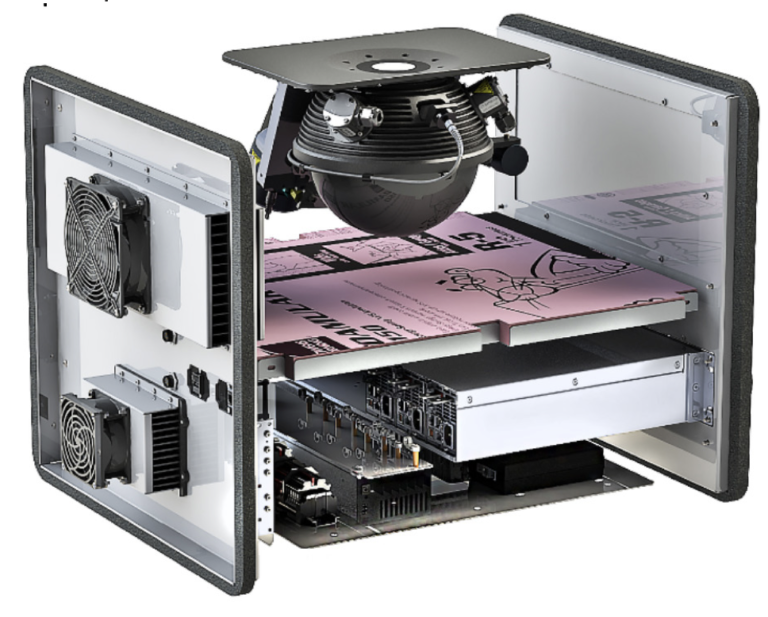
The electronics rack in the lower half of the system contains the three lamp power supplies: one for each of the QTH lamps. The lower half also contains the system’s Cube PC with Labsphere HELIOSense Control Software, a thermocouple interface control unit, a USB hub, the filter wheel controller and all supporting power supplies. A remote laptop computer with HELIOSense, a custom LAN software interface, and an Ethernet router are also included to provide simultaneous remote control of multiple systems at once.
System Specifications & Features:
- Uniform source integrating sphere system for use in an outdoor environment featuring:
- 8 inch diameter Spectralon®-lined sphere with 2 inch diameter up-looking exit port
- QTH Lamps:
- HES-150W light source
- HIS-50W & HIS-100W light sources
- High resolution manual variable attenuator (VAM) for the 150W halogen lamp source
- SD-S1 silicon detector with three-position filter slide and aperture shutter
- Labsphere HELIOSense Control Software in built-in computer
- Master remote laptop PC and Ethernet router
- Custom LAN software in remote laptop PC to control connected systems simultaneously
Benefits:
- Can be used in
- Harsh outdoor environments
- Broad temperature and humidity ranges \
- Provides ALL the benefits of a HELIOS:
- Real time in the field radiometric calibration and color – Ability to filter a specific spectral output